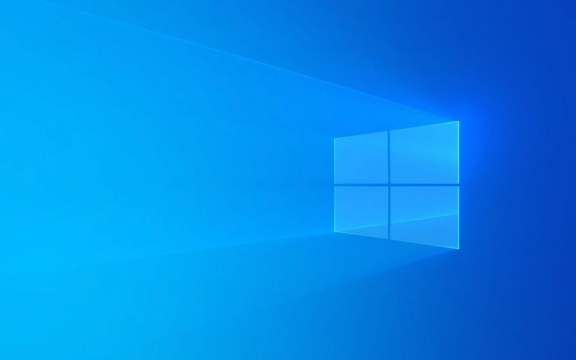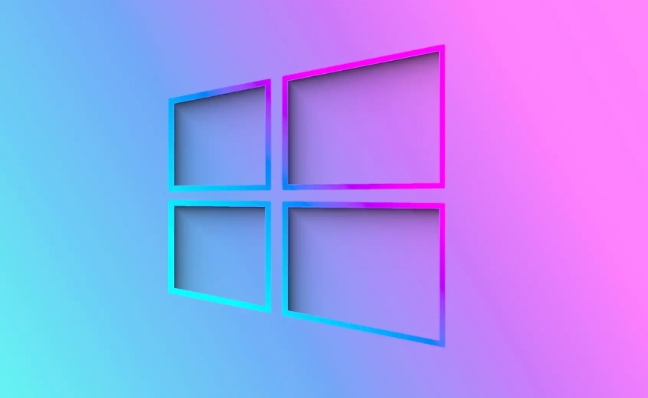Disable Fast Startup to resolve hybrid shutdown conflicts with user profile loading. 2. Manage startup programs and non-essential third-party services to reduce login bottlenecks. 3. Create a new local user account to test for profile corruption; if login improves, back up data, delete the old profile, and recreate the account. 4. Update or roll back graphics drivers via Device Manager or manufacturer websites to fix GPU-related hangs. 5. Run SFC /scannow and DISM /Online /Cleanup-Image /RestoreHealth to repair corrupted system files. 6. For Microsoft account users, switch to a local account temporarily to test for sync delays, then selectively disable sync settings if needed. A registry tweak to set EnablePrefetcher and EnableSuperfetch to 3 may provide minor improvements on some systems. Start with disabling Fast Startup and managing startup apps, as these resolve most cases of slow login in Windows 10.

Slow login or a long "Welcome" screen in Windows 10 can be frustrating, especially when you're in a hurry. The delay usually happens after you enter your password and see the spinning circle for an unusually long time. The good news is that this issue is often fixable with a few targeted troubleshooting steps. Here’s how to speed things up.

1. Disable Fast Startup (Common Fix)
Fast Startup is a Windows feature designed to make booting faster, but it can sometimes cause login delays—especially if you're using a Microsoft account or have certain drivers installed.
How to disable it:

- Press
Win Xand select Power Options. - Click Choose what the power buttons do on the left.
- Click Change settings that are currently unavailable.
- Uncheck Turn on fast startup (recommended).
- Click Save changes.
Restart your PC and check if login is faster.
Why this helps: Fast Startup creates a hybrid shutdown state that can conflict with user profile loading, especially on systems with SSDs or certain storage drivers.

2. Check for Startup Programs and Services
Too many apps launching at login can slow down the Welcome screen. Even though they don’t start immediately, Windows waits for the user session to fully initialize before launching them—this can create a bottleneck.
To manage startup apps:
- Press
Ctrl Shift Escto open Task Manager. - Go to the Startup tab.
- Disable unnecessary programs (e.g., cloud sync tools, updaters, chat apps).
Also check background services:
- Press
Win R, typemsconfig, and press Enter. - Go to the Services tab, check Hide all Microsoft services, then disable non-essential third-party services.
- Alternatively, use
services.mscto review services manually.
Tip: Look for services related to printer software, RGB lighting, or hardware utilities that aren’t needed at startup.
3. Fix User Profile Issues
A bloated or corrupted user profile can cause long delays during login. Windows loads your profile during the Welcome screen, so issues here directly impact timing.
Try creating a new local user account:
- Open Settings > Accounts > Family & other users.
- Under "Other users," click Add someone else to this PC.
- When prompted, choose I don’t have this person’s sign-in information, then Add a user without a Microsoft account.
- Create a local account with a username like "TestUser".
- Log out and log in with the new account.
If the new account logs in quickly, the problem is likely with your original profile.
Fix the original profile:
- Back up your files.
- Delete the old profile (via System Properties > Advanced > User Profiles).
- Re-add your Microsoft account or recreate the local account.
4. Update or Roll Back Graphics Drivers
Outdated or buggy graphics drivers—especially from NVIDIA, AMD, or Intel—can cause the Welcome screen to hang.
Update your driver:
- Press
Win X> Device Manager. - Expand Display adapters, right-click your GPU, and select Update driver.
- Choose Search automatically for updated driver software.
Or, download the latest driver directly from the manufacturer’s website.
If the problem started after a recent update:
- In Device Manager, right-click the GPU and choose Properties.
- Go to the Driver tab and click Roll Back Driver.
5. Run System File Checker (SFC) and DISM
Corrupted system files can delay the login process.
Run SFC:
- Open Command Prompt as Administrator.
- Type:
sfc /scannow
- Wait for the scan to complete and fix any issues.
Then run DISM:
DISM /Online /Cleanup-Image /RestoreHealth
Restart after both complete.
6. Check for Roaming Profile or Sync Delays (Microsoft Account Users)
If you're signed in with a Microsoft account, Windows syncs settings across devices. A slow network or sync issue can delay login.
Try switching to a local account temporarily:
- Go to Settings > Accounts > Your info.
- Click Sign in with a local account instead and follow the prompts.
After switching, test login speed. If it improves, the delay was likely due to syncing.
You can switch back later and selectively disable sync:
- Settings > Accounts > Sync your settings > Turn off unnecessary options (like themes, passwords, or app settings).
Bonus: Registry Tweak (Advanced)
If you're comfortable with the registry, you can reduce the Windows shell load delay:
- Press
Win R, typeregedit, and press Enter. - Navigate to:
HKEY_LOCAL_MACHINE\SYSTEM\CurrentControlSet\Control\Session Manager\Memory Management\PrefetchParameters - Find the
EnablePrefetcherandEnableSuperfetchvalues. - Set both to
3(if not already).
Note: This tweak is less impactful on SSDs, but some users report improvement.
Basically, the slow "Welcome" screen comes down to profile issues, startup bloat, driver conflicts, or sync delays. Start with disabling Fast Startup and checking startup apps—it solves the problem in most cases. From there, work through profile and driver checks. Not complex, but easy to overlook.
The above is the detailed content of How to fix slow login or 'Welcome' screen in Windows 10. For more information, please follow other related articles on the PHP Chinese website!

Hot AI Tools

Undress AI Tool
Undress images for free

Undresser.AI Undress
AI-powered app for creating realistic nude photos

AI Clothes Remover
Online AI tool for removing clothes from photos.

Clothoff.io
AI clothes remover

Video Face Swap
Swap faces in any video effortlessly with our completely free AI face swap tool!

Hot Article

Hot Tools

Notepad++7.3.1
Easy-to-use and free code editor

SublimeText3 Chinese version
Chinese version, very easy to use

Zend Studio 13.0.1
Powerful PHP integrated development environment

Dreamweaver CS6
Visual web development tools

SublimeText3 Mac version
God-level code editing software (SublimeText3)

Hot Topics
 Windows 11 slow boot time fix
Jul 04, 2025 am 02:04 AM
Windows 11 slow boot time fix
Jul 04, 2025 am 02:04 AM
The problem of slow booting can be solved by the following methods: 1. Check and disable unnecessary booting programs; 2. Turn off the quick boot function; 3. Update the driver and check disk health; 4. Adjust the number of processor cores (only for advanced users). For Windows 11 systems, first, the default self-start software such as QQ and WeChat are disabled through the task manager to improve the startup speed; if you use dual systems or old hardware, you can enter the power option to turn off the quick boot function; second, use the device manager to update the driver and run the chkdsk command to fix disk errors, and it is recommended to replace the mechanical hard disk with SSD; for multi-core CPU users, the kernel parameters can be adjusted through bcdedit and msconfig to optimize the startup efficiency. Most cases can be corrected by basic investigation
 How to Change Font Color on Desktop Icons (Windows 11)
Jul 07, 2025 pm 12:07 PM
How to Change Font Color on Desktop Icons (Windows 11)
Jul 07, 2025 pm 12:07 PM
If you're having trouble reading your desktop icons' text or simply want to personalize your desktop look, you may be looking for a way to change the font color on desktop icons in Windows 11. Unfortunately, Windows 11 doesn't offer an easy built-in
 Fixed Windows 11 Google Chrome not opening
Jul 08, 2025 pm 02:36 PM
Fixed Windows 11 Google Chrome not opening
Jul 08, 2025 pm 02:36 PM
Fixed Windows 11 Google Chrome not opening Google Chrome is the most popular browser right now, but even it sometimes requires help to open on Windows. Then follow the on-screen instructions to complete the process. After completing the above steps, launch Google Chrome again to see if it works properly now. 5. Delete Chrome User Profile If you are still having problems, it may be time to delete Chrome User Profile. This will delete all your personal information, so be sure to back up all relevant data. Typically, you delete the Chrome user profile through the browser itself. But given that you can't open it, here's another way: Turn on Windo
 How to fix second monitor not detected in Windows?
Jul 12, 2025 am 02:27 AM
How to fix second monitor not detected in Windows?
Jul 12, 2025 am 02:27 AM
When Windows cannot detect a second monitor, first check whether the physical connection is normal, including power supply, cable plug-in and interface compatibility, and try to replace the cable or adapter; secondly, update or reinstall the graphics card driver through the Device Manager, and roll back the driver version if necessary; then manually click "Detection" in the display settings to identify the monitor to confirm whether it is correctly identified by the system; finally check whether the monitor input source is switched to the corresponding interface, and confirm whether the graphics card output port connected to the cable is correct. Following the above steps to check in turn, most dual-screen recognition problems can usually be solved.
 Fixed the failure to upload files in Windows Google Chrome
Jul 08, 2025 pm 02:33 PM
Fixed the failure to upload files in Windows Google Chrome
Jul 08, 2025 pm 02:33 PM
Have problems uploading files in Google Chrome? This may be annoying, right? Whether you are attaching documents to emails, sharing images on social media, or submitting important files for work or school, a smooth file upload process is crucial. So, it can be frustrating if your file uploads continue to fail in Chrome on Windows PC. If you're not ready to give up your favorite browser, here are some tips for fixes that can't upload files on Windows Google Chrome 1. Start with Universal Repair Before we learn about any advanced troubleshooting tips, it's best to try some of the basic solutions mentioned below. Troubleshooting Internet connection issues: Internet connection
 Want to Build an Everyday Work Desktop? Get a Mini PC Instead
Jul 08, 2025 am 06:03 AM
Want to Build an Everyday Work Desktop? Get a Mini PC Instead
Jul 08, 2025 am 06:03 AM
Mini PCs have undergone
 Is the latest Windows update safe to install
Jul 02, 2025 am 01:04 AM
Is the latest Windows update safe to install
Jul 02, 2025 am 01:04 AM
Microsoft's latest Windows updates can generally be installed safely, but they need to be judged based on the update type and usage scenario. Ordinary users can update their daily office work, video watching, etc. directly; professional software or game users should be cautious. Regular quality updates (such as the monthly "Tuesday Patch") have low risks, so it is recommended to install them in time; updates to functions (such as large version upgrades) may cause compatibility issues. It is recommended to back up data, confirm software and hardware support, and check community feedback before installing. Overall, quality updates are safe and reliable, and functional updates are suitable for optional installation after observation.








